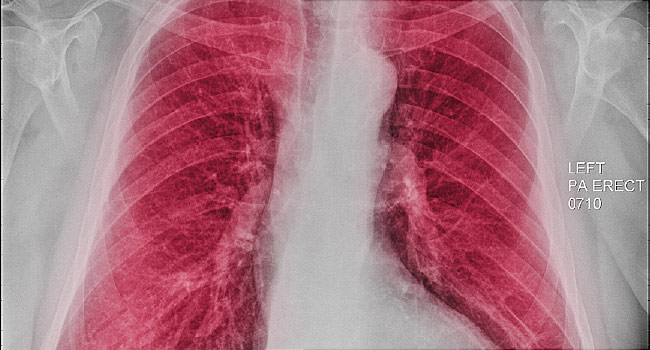Respiratory organs include air passages (airways) such as the nasal cavity, oral cavity, bronchi, and lungs. As the bronchus goes further (peripheral), it branches and becomes thinner, and the inner diameter becomes much narrower. Beyond that, there are numerous small rooms (alveoli) that look like grapes, and the walls are lined with capillaries. In the alveoli, the blood vessels take the oxygen, while unnecessary (hazardous) carbon dioxide is discharged. (Gas exchange) is a long-term pollutant, which causes inflammation in the lungs and respiratory tract, making it difficult to remove harmful substances.

Chronic Obstructive Pulmonary Disease (COPD) typified by emphysema has recently been increasing, and bronchial asthma is a similar disease, but asthma death is decreasing. Smoking is a significant cause of COPD. However, inflammation is caused by long-term inhalation of harmful substances such as exhaust gas, PM2.5, dust, and domestic combustion gas, and destruction of Alveoli (emphysematous lesions) Airway narrowing and thickening (inflammatory lesions) occur and gradually progress. Its cytotoxic substances include carbon monoxide, formaldehyde.

Lung disease caused by Coronavirus is currently in many discussions and has raised a significant panic worldwide. So, I would like to share how fucoidan help and works to alleviate this lung disease.
At present, the symptoms of the new coronavirus infection (COVID-19), which is a pandemic (a global epidemic), has been spreading from China to the whole world. The cases are mild, moderate, or severe. The initial symptoms are mild, and symptoms such as fever and cough are common, and olfactory and taste disorders may occur. Besides, pneumonia develops when it becomes severe. The initial signs of the new coronavirus infection are cold-like symptoms such as the runny nose, cough, fever, slight sore throat, muscle aches, and fatigue (malaise). In particular, many people complain about a temperature of about 37.5 ° C and muscular physical weakness.
It is also known that some people have an olfactory / taste disorder, such as the odor or the taste. Also, nasal congestion, runny nose, headaches, sputum or bloody sputum, and diarrhea may occur depending on the person. If the initial symptoms of a new-type coronavirus infection do not improve within a period of 5 to 7 days and become severe, pneumonia may develop, and breathing may become difficult, resulting in so-called dyspnea.
In addition to pneumonia, there may be cases where inflammation occurs in other respiratory organs such as upper respiratory tract inflammation and bronchitis.
Even if the new coronavirus infection becomes severe and pneumonia occurs, more than half of the cases had gradually recovered by treating the symptoms. However, when pneumonia worsens and becomes more severe, Acute Respiratory Syndrome (ARDS), septic shock, multiple organ failure, may occur and may eventually result in death.
So, before coronavirus infection gets sever, why don’t you try fucoidan?
According to the research by Yuba Raj Pokharel et al., fucoidan, a marine sulfated polysaccharide, has effects of antithrombotic and anti-inflammatory. They determined the outcome of fucoidan on MUC5AC expression in a human bronchial epithelial cell line, NCI-H292. (Mucin5AC has been linked to mucus hypersecretion in the respiratory tract and is associated with chronic obstructive pulmonary disease). They found that the acrolein-mediated transactivation of MUC5AC was selectively dependent on AP-1 activation and was suppressed by fucoidan. AP-1 activation is critical for MUC5AC induction by acrolein. Fucoidan may block AP-1 activation and inhibit MUC5AC expression, a similar mechanism by which it prevents the installation of nitric oxide synthase in activated macrophages (Yang et al. 2006).
* Activator protein 1 (AP–1) is a transcription factor that regulates gene expression in response to a variety of stimuli, including cytokines, growth factors, stress, and bacterial and viral infections.
